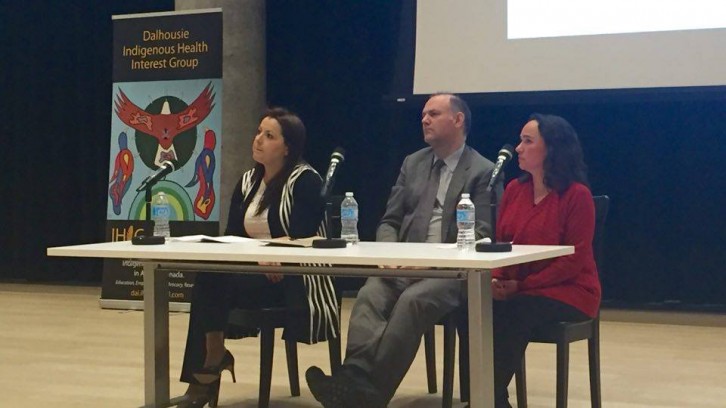Health
Health panel calls for sweat lodges, elders in hospitals
Three health professionals suggest ways to make the health system better for indigenous people

caption
From the left: Dr. Doris Mitchell, Dr. Chris Bourdon and Cheyenne Mary.
caption
From the left: Dr. Doris Mitchell, Dr. Chris Bourdon and Cheyenne Mary.Health centres and hospitals should create places for indigenous healing practices like smudging, sweat lodges and elder advisers, a panel of health experts said Wednesday.
Dr. Doris Mitchell, a family physician and Ojibway woman; Cheyenne Mary, an aboriginal nurse; and Dr. Chris Bourdon, a physician and chief of staff at the Health Sciences North Emergency Department (ED) in Ontario, spoke at the Halifax Central Library.
The panel was held by Dalhousie’s Indigenous Health Interest Group to look into one of the recommendations from the federal Truth and Reconciliation Commission’s report that focuses on improving the health of indigenous people. Related stories
Compared to the general population, the life expectancy for indigenous people ranges from five to 10 years.
“Nothing prepared me for the visits I made to the reserves in Manitoba to pick up ill patients,” said Bourdon, who worked with indigenous populations in both northern Manitoba and Ontario.
“Medical school didn’t prepare me for that. It was like a third world country.”
Mary commented that “by not doing anything about that is like contributing to the oppressor.
“This is why we need to have a space in the hospital to conduct our ceremonies so we can see ourselves and feel welcomed,” she said.
Mary, a member of the Bear River First Nation in Nova Scotia, is a professor at the University of New Brunswick. She’s worked in Atlantic Canada’s indigenous communities as a nurse.
Mary said hospitals should have images on the walls, reflecting the cultural beliefs of indigenous people.
She said hospitals must have people from indigenous communities providing care, as to make patients feel more at home.
By offering the space in hospitals, indigenous patients and their families would be able to connect with their community, especially with the elders, who are knowledgeable in traditional health practices.
Mitchell said the residential school system disrupted these practices.
“There was no longer any community role models,” she said. “Children were taken from their families at age four and put into residential schools.”
Mitchell is the daughter of a residential school survivor. She provides primary care, emergency and hospital care in her own First Nation community in Ontario.
Mitchell said people in the health sector must first try and develop relationships with indigenous people.
“It is going to take time to build trust, so leave your ego at the door and don’t be unassuming.”
Sonya Swift, the head of Dalhousie’s Indigenous Health Interest Group, said “I don’t think enough attention is placed on indigenous health discrepancies.”
She said health-related school programs are still slow at covering indigenous health issues.
“This is why a discussion like this is important.”
In Atlantic Canada, there is not yet a space inside hospitals and health centres for indigenous people, said Swift.
Indigenous health spaces are slowly appearing in Ontario, the group said, noting the Anishnawbe Health Toronto Community Health Centre as an example.

